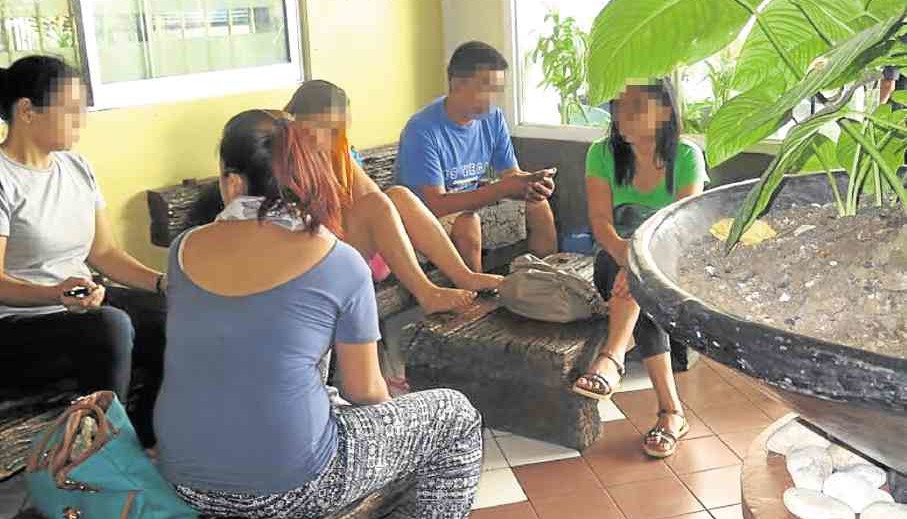
RELATIVES of four missing men, who were on the police’s drug watch list in Calauag town in Quezon province, found the burned, mutilated remains of their kin in a funeral parlor in Lucena City.DELFIN T. MALLARI JR. / Inquirer Southern Luzon
LUCENA CITY, Philippines—The Commission on Human Rights (CHR) is offering protection to witnesses who could help shed light on the identities of those involved in the abduction and brutal killings of four residents of Calauag town in Quezon province who had gone missing shortly before their mutilated remains were found in different locations.
The victims had been tagged as drug suspects.
The CHR has started investigating the case but is stumped by the absence of witnesses as residents of Calauag and the victims’ relatives had clammed up apparently out of fear for their lives.
“We’re ready to recommend their security under the government witness protection program,” said lawyer Dante Santiago Rito, CHR regional director.
He said a “quick reaction team” of the CHR is conducting a field investigation on the killings and mutilation of the remains of the four Calauag residents—Joel de la Torre, 25; Augosto Leron, 43; Gilbert Alvarez, 26, and his brother, Gerald, 24.
A source, who asked not to be identified for security reasons, said some witnesses had given key pieces of information on the involvement of policemen in the killings.
“The police have some explaining to do,” said the source from Calauag.
Relatives of the four victims reported the men’s disappearance on Sept. 26, almost at the same time as police reported a grisly find—three burned heads and body parts discovered separately in the towns of Mulanay and General Luna.
Bullet wounds were found in the heads, which had been identified as those of Gilbert Alvarez, De la Torre and Leron.
On Thursday, police discovered another headless corpse inside a burned sack under a bridge in Barangay Cambuga in Mulanay, the village where the other corpses and body parts were previously found. The body is most likely that of Gerald Alvarez.
The Calauag police said the four men were on its drug watch list.
The police Special Investigation Task Group classified the case as “deaths under investigation” or DUI.
The Philippine National Police ceased to refer to cases of corpses strewn in streets or dumped on empty lots as cases of extrajudicial killings.
Senior Supt. Antonio Yarra, Quezon police chief, said there are at least 18 cases of DUI in the province since the war on drugs started in July in the early days of the Duterte administration.
Yarra appealed to families of the victims to cooperate with police and CHR investigators.
Lawyer Jacqueline de Guia-De la Peña, CHR national spokesperson, said the commission wants to be certain, through forensic and DNA tests, about the identities of the corpses and body parts found in Quezon.
Told that relatives of the four men had already identified the victims, De la Peña said the CHR just wants to be “very sure and make the process independent and credible.”
Relatives of the victims and residents of Calauag had been afraid to testify shortly after the victims’ corpses were found.
In an official report, the Calauag police said two of the victims’ companions, Ar-Jay Cabrera and Rodante Aday, had been the target of an antidrug operation on Sept. 25. Cabrera and Aday, who had been killed in a gunfight, were playing cards with the four victims when police came.
But the report did not mention anything about the arrest of the four victims.